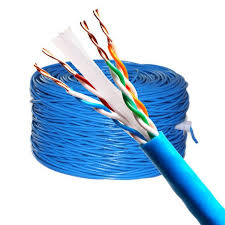In a world in which technological advancements happen in a rapid pace, making sure your network infrastructure can keep up with the pace of technology is vital. While CAT5 cableshave been an established option for wiring networks, their role in future-proofing your network isn’t as clear. Here’s the way CAT5 cables fit in the context in future-proofing your network as well as the considerations involved.
1. Understanding the capabilities of CAT5: CAT5 cables, introduced in the early 1990s, support network speeds up to 100 Mbps and are specifically designed to operate at frequencies of up to 100 MHz. They’re sufficient for the most basic networking tasks, such as browsing the web and streaming video in standard resolutions. However, as the speed of internet and network demands grow, CAT5 cables may become the main factor.
2. Comparing to Newer Standards: As technology advances newer standards for cable like CAT5e, CAT6, and CAT6a have improved performance. CAT5e, an improved version of CAT5 can support the gigabit speed (1 Gbps) and reduces crosstalk which makes it better suited for modern networking needs. Both CAT6 and CAT6a enhance performance by allowing speeds of as high as 10 Gbps across short distances and frequencies of up to 250 MHz and 500 MHz, respectively.
3. The longevity of CAT5 cables: While CAT5 cables are generally adequate for older network setups and applications with low bandwidth, they’re not the best choice for future-proofing a network. With the rise of high-speed internet and the increasing demand for streaming video in high definition, gaming, and large transfer of files, relying exclusively on CAT5 cables could hinder your network’s performance as well as its scalability.
4. Future-Proofing Considerations: To future-proof your network, you should consider using CAT5e and CAT6 cables instead of CAT5. These cables offer improved capacity and higher speeds, ensuring that your network is able to handle future technology upgrades without requiring a complete rewiring. Additionally, investing in higher-grade cables are cost-effective in the long run which will reduce the requirement for repairs and upgrades.
In the end, even though CAT5e cables were a great choice for a while, they may not be the best choice for future-proofing your network. Upgrading to CAT5e or CAT6 cables can provide better performance and guarantee that your network remains capable of handling evolving technology requirements. By planning ahead and investing in better cables can ensure your network’s longevity and efficiency.
